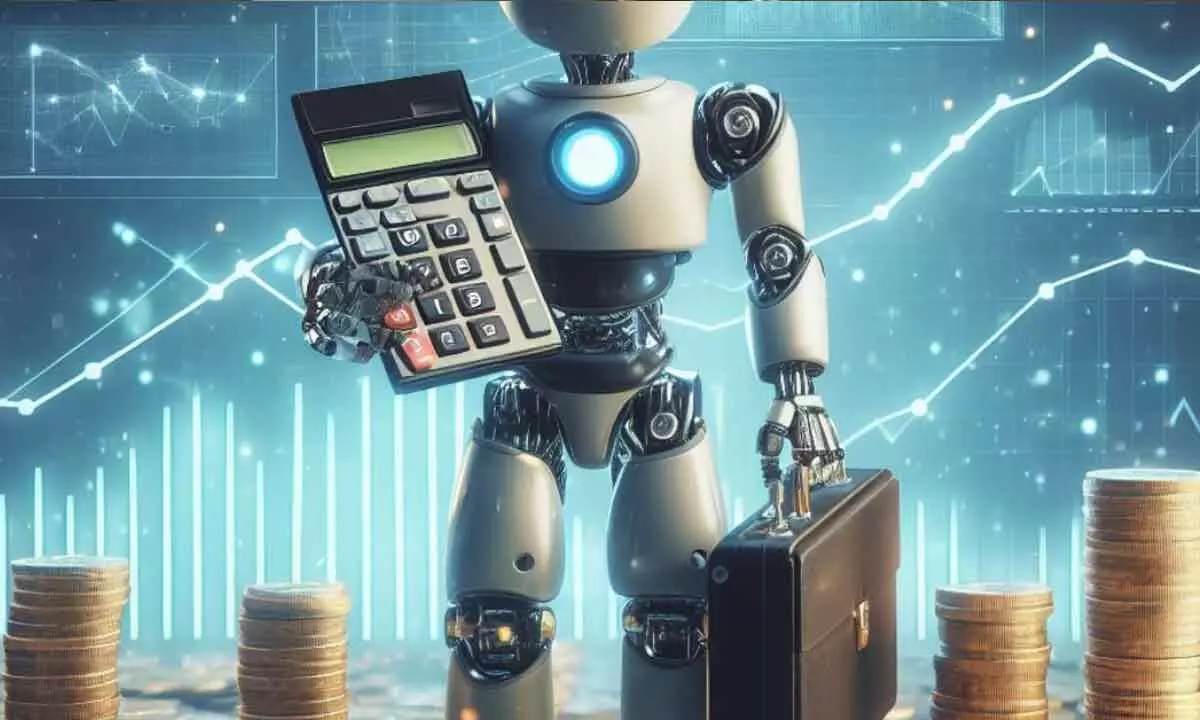AI, cloud, robots reshaping tax world
As the govt sets the stage for a digitally empowered taxation ecosystem, there is the need for taxpayers to embrace these rapid technological innovations
image for illustrative purpose

From excel sheets to AI-powered insights, the way we manage, report, and regulate taxes is being fundamentally transformed. This is not just an evolution, but a paradigm shift with profound implications for governments, businesses, and individuals alike
A paradigm shift is sweeping through tax management, driven by the convergence of powerful technological advancements. This revolution is not merely streamlining processes, but fundamentally reshaping the way taxes are managed, reported, and regulated.
Gone are the days when excel sheets and manual calculations dominated the tax landscape. Today, cutting-edge technologies such as data analytics, artificial intelligence/ machine learning (AI/ML), cloud computing, robotic process automation (RPA), etc., are enabling unprecedented levels of efficiency, accuracy, and sophistication in tax management. Technology isn't just helping in making tasks smoother and handling complex rules; in fact, it has become a powerful aid for both – tax administrators and taxpayers.
New-age technologies in Tax Data analytics and AI/ML
Data analytics and AI/ML have equipped tax authorities and businesses with unprecedented capabilities to analyse vast datasets, uncover patterns and discern potential risks. Data visualisation tools such as PowerBI, Tableau, etc., and predictive and prescriptive analytics help in proactive tax planning, decision making and risk mitigation. The swift identification of anomalies and insights from the output of tax analytics streamlines tax processes and helps in enhancing accuracy and efficiency.
Blockchain
Blockchain technology’s hallmark lies in providing immutable and transparent transaction records. Through a decentralized ledger system, it significantly reduces the potential of fraud, enhances audit trails and fosters trust in tax systems. For instance, if tax authorities utilise blockchain for transactions, it will help in recording transactions securely, permanently and ensure records are not tampered with or altered – this would be of significant use in the context of transactional taxes such as GST and TDS. It not only lightens the compliance load but also safeguards the integrity of crucial tax-related data, thereby enhancing the overall efficiency and reliability of the tax ecosystem.
Cloud computing
The integration of cloud computing with tax systems brings scalability, accessibility and cost-efficiency. For instance, if an organisation decides to migrate its processes to a cloud-based platform – this move will consolidate all tax-related data, making it accessible from anywhere and at any time. It will enable real-time collaboration among different departments and help in seamless integration with complementary technologies such as AI or data analytics. It is also pertinent to note that tax software / solutions offered by tax technology specialists are also on the cloud. As a result, tax systems become more agile and adaptable, and they can be scaled up easily to accommodate increased demands in future without large investments in hardware.
Robotic Process Automation (RPA)
RPA has transformed tax processes by automating repetitive tasks such as data extraction, data entry and form processing. RPA uses bots to mimic human actions, minimizing errors and maximizing operational efficiency. It enables tax professionals to focus on more important tasks such as strategic initiatives and analytics, while the bots handle routine tax functions, leading to significant efficiency.
Generative AI
The integration of Natural Language Processing (NLP) and chatbots will allow facilitating more user-friendly interactions between taxpayers and tax authorities in an automated manner. Chatbots can help provide instantaneous responses to queries, guide taxpayers through processes and assist in real-time issue resolution, thereby enhancing accessibility and reducing processing times. The more recent phenomenon of Generative AI is taking the world by storm, and it is likely to play a significant role in tax – for both, tax administrators and taxpayers.
Global developments and tax technology
Pillar 2 / GloBE Rules
An important global development in the tax space is the Pillar 2 / GloBE rules, pursuant to which large organisations will be required to pay minimum tax of 15 per cent in each jurisdiction in which they operate. The introduction of these rules is on the cards in India, and technology will play a very significant role in compliance with the new rules, as they are complex and require significant amount of data collation and processing.
Standard Audit File for Tax (SAF-T)
A development that is likely to revolutionise tax compliance in the coming years is SAF-T, which is a global OECD standard. SAF-T involves preparation of a standardised file of business transactions for submission by taxpayers and evaluation by tax administration in an automated manner. This would make the entire tax compliance process efficient.
Conclusion
As the government sets the stage for a digitally empowered taxation ecosystem, there is the need for taxpayers to embrace these rapid technological innovations. We are at the cusp of a technological revolution in tax and will witness a paradigm shift in the way taxes are managed.
(Pritin Kumar, Partner; Roma Kothari, Manager at Deloitte Touche Tohmatsu India LLP)

